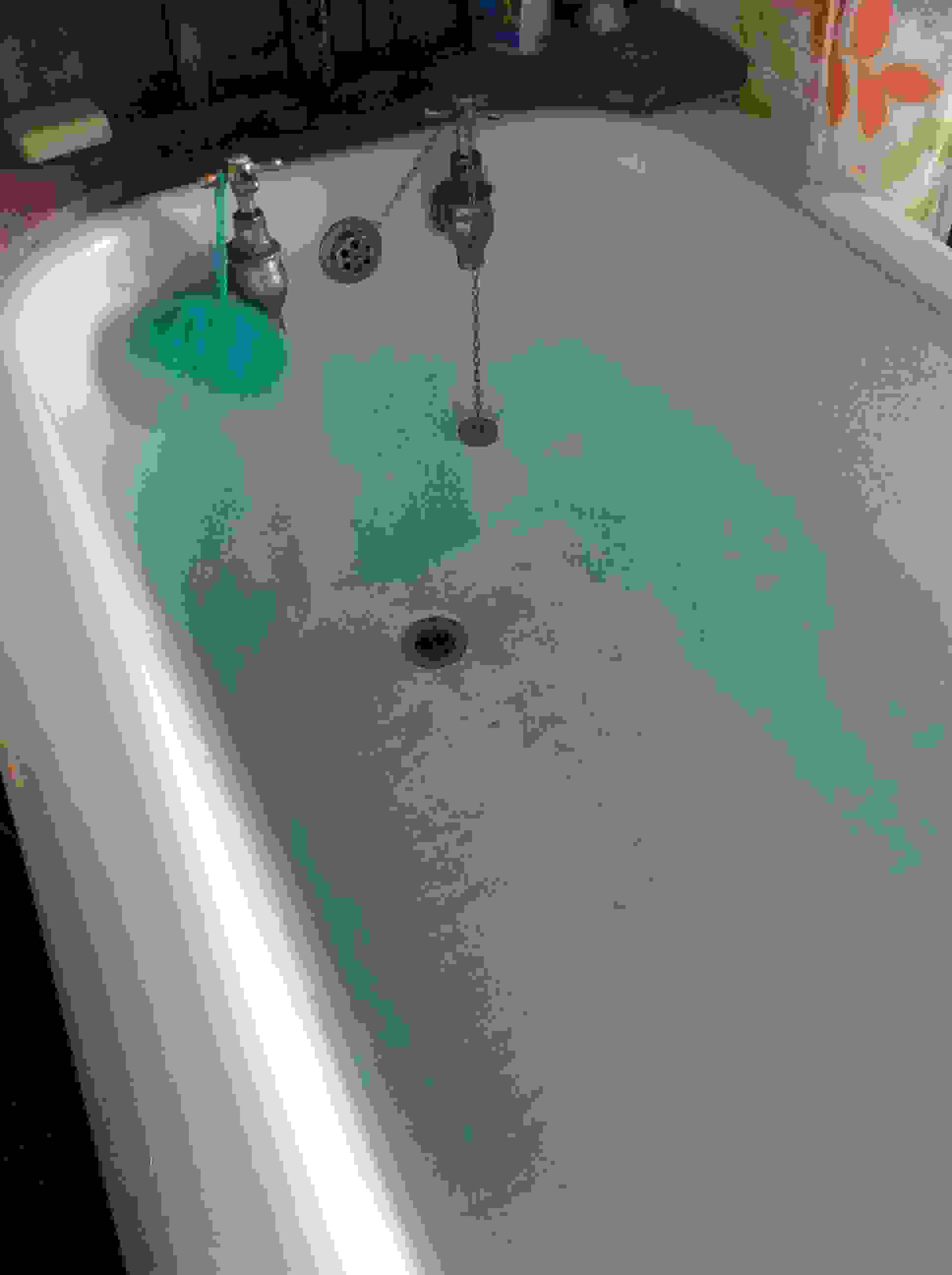Blue Staining in Bath - A guide to solving the issue
 Blue staining such as that pictured here, is caused because of corrosion of copper pipes and hot water cylinders and is usually found in homes supplied by a private water supply.
Blue staining such as that pictured here, is caused because of corrosion of copper pipes and hot water cylinders and is usually found in homes supplied by a private water supply.
Why does it happen?
The reason mainly stems from aggressive acidic pH levels . The pH value of water is a measure of acidity and alkalinity. Pure water is very slightly ionised
into positively charged hydrogen ions (H+) and negatively charged hydroxide ions (OH–). Water is neutral when the numbers of hydrogen ions and hydroxide ions are equal. When the concentration of hydrogen ions exceeds that of hydroxide ions, the water is acidic and has a pH value less than 7.
Conversely, when the concentration of hydroxide ions exceeds that of hydrogen ions, the water is alkaline and has a pH value greater than 7. The pH scale is logarithmic, therefore a change in pH value of one unit represents a tenfold change in the concentrations of hydrogen and hydroxide
ions.
Acidity in raw waters can result from the dissolution of carbon dioxide to produce weak carbonic acid. Groundwaters and surface waters may also contain organic acids produced during the decomposition of vegetation. A surface water derived from a peaty moorland catchment may have a pH value as low as 4. Alkaline waters result almost entirely from the dissolution of the bicarbonate, carbonate and hydroxide salts of calcium, magnesium, sodium and potassium. Soft acidic waters can cause corrosion of pipework and the dissolution of metals such as copper, zinc and lead. Hard, alkaline waters can cause problems associated with scale formation. Some hard
waters may also be plumbosolvent (i.e. capable of dissolving lead).
In the UK, the private water supply regulations state that pH levels should be between 6.5-9.5 pH. The picture on the left actually shows a bathtub from a home with pH levels of 6.7.
The solution
The pH value of water can be changed by aeration, alkali or acid dosing or contact with alkaline material in contact beds. We recommend having a full water analysis conducted prior to trying to solve the problem. The reason is that that the solution will often vary depending on the levels shown on the report.
Most often, the problem is that there is a low pH level and the presence of carbon dioxide. The solution will involve putting calcium carbonate back into the water and putting magnesium oxide back in the water. This can be achieved using a media blend of Calcite and Corrosex mixture in a filter tank which is positioned at the point of entry in your home. The unit must sized correctly according to the peak flow rate (i.e. the amount of water being used at the busiest time of day in litres per minute). Often the treated water will need to blended with untreated water in order to not over-correct the problem. This is because the Private Water Supply Regulations state that the pH levels must not exceed 9.5pH.
Find out more about our pH correction units and contact us today for a free consultation and quote. Go straight through to our technical experts by calling 0330 113 7181 (Mon-Fri 8:30am-5:30pm).
